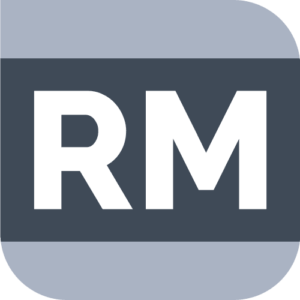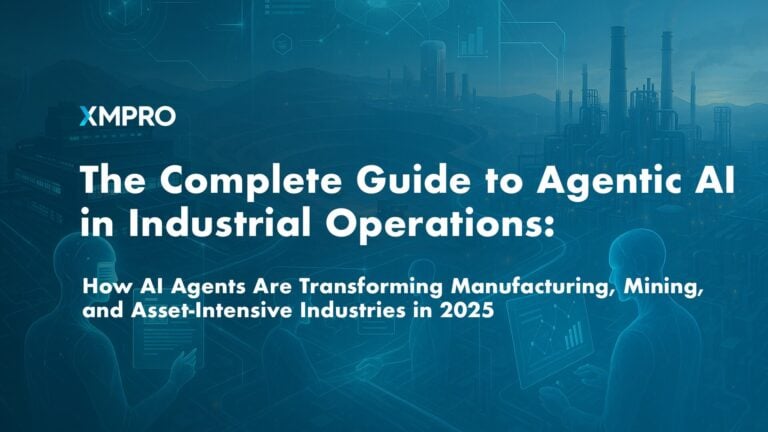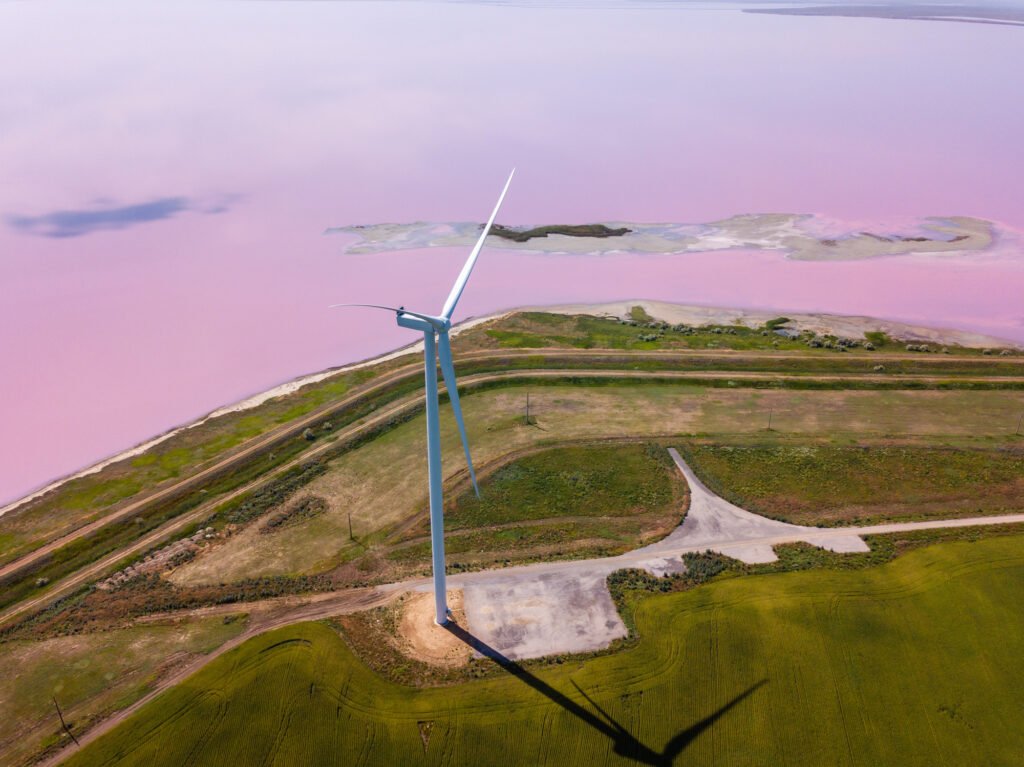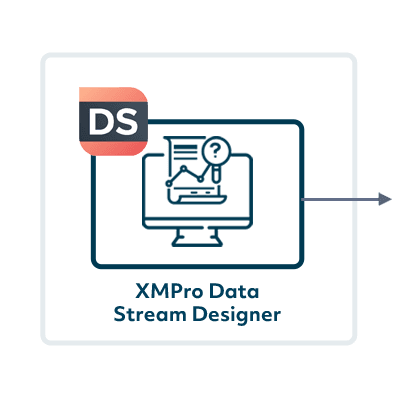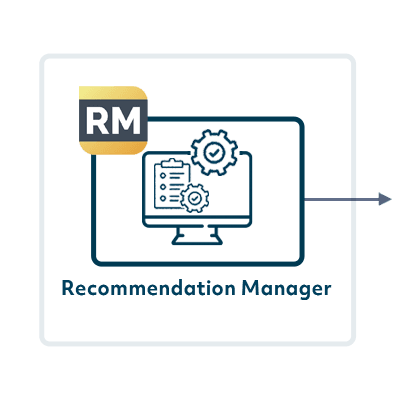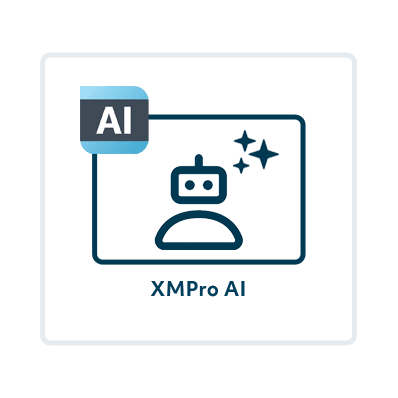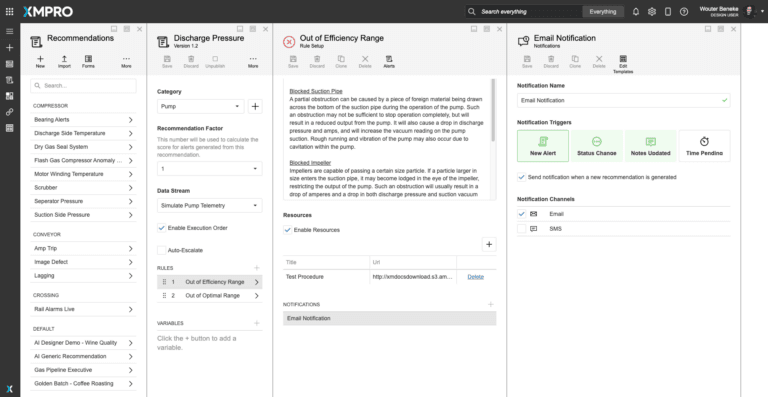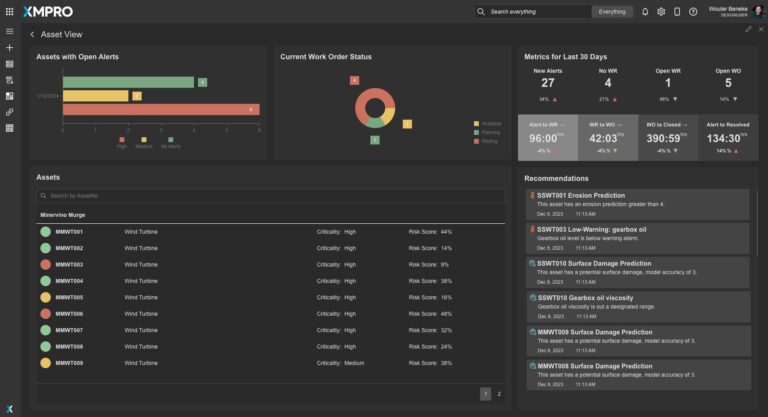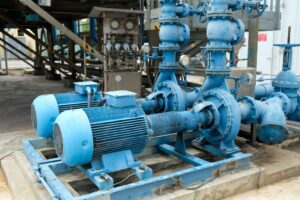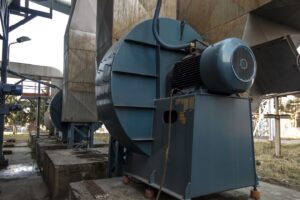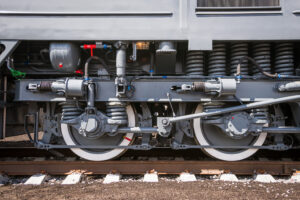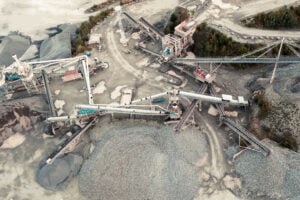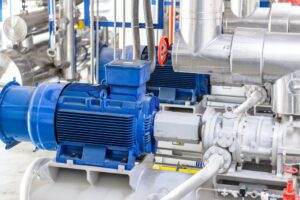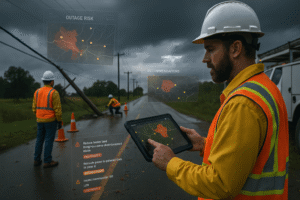Predictive Maintenance for Wind Turbines
Introduction
In the renewable energy sector, particularly in wind farms, maintaining turbine efficiency and minimizing downtime is crucial. XMPro’s solution for Predictive Maintenance in Wind Turbines leverages advanced technologies to anticipate and address maintenance needs before they escalate into costly repairs or operational halts.
The Challenge
Wind turbines are subject to various stresses and wear over time, leading to potential failures. Key challenges includes
- Detecting Early Signs of Wear or Failure: Identifying issues in components like gearboxes, bearings, and blades before they lead to breakdowns.
- Optimizing Maintenance Schedules: Scheduling maintenance activities to minimize downtime and extend turbine lifespan.
- Reducing Unplanned Downtime: Preventing unexpected failures that can lead to costly repairs and energy production losses.
The Solution: XMPro iBOS for Predictive Maintenance for Wind Turbines
XMPro’s solution leverages IoT sensors, advanced data analytics, and machine learning to predict and prevent turbine failures. By employing a combination of granular rule logic and AI, XMPro provides detailed insights into the remaining useful life of components and delivers actionable predictive maintenance recommendations. This proactive approach helps optimize turbine performance, reduce downtime, and extend asset lifespan, ensuring efficient and reliable wind energy production.
Key Features
Sensor Data Integration & Transformation:
Utilizing existing IoT sensors to monitor critical turbine components such as gearboxes, rotors, and blades, capturing data on vibration, temperature, and acoustics.
Predictive Analytics:
Analyzing sensor data with machine learning algorithms to identify patterns indicative of wear or impending failure.
Real-Time Maintenance Alerts:
Providing real-time alerts to maintenance teams when potential issues are detected, enabling proactive repairs.
Customizable Dashboards:
Offering customizable dashboards that display key turbine health data, allowing operators to monitor the status of each turbine and plan maintenance activities effectively.
Historical Data Analysis:
Leveraging historical data to improve predictive models and maintenance strategies over time.
How XMPro iBOS Modules Work Together To Create This Predictive Maintenance Solution

XMPro Data Stream Designer
XMPRO’s Data Stream Designer lets you visually design the data flow and orchestration for your real-time applications. Our drag & drop connectors make it easy to bring in real-time data from a variety of sources, add contextual data from systems like EAM, apply native and third-party analytics and initiate actions based on events in your data.
Figure 1. Wind Turbine Condition Monitoring Data Stream
This renewable condition monitoring data stream for a wind turbine begins by reading all records from various data sources, including an OPC UA server. The data is then joined and contextualized with sensor data to provide a comprehensive view. Calculated metrics, such as oil levels, are derived from the sensor data. The processed data is broadcasted to multiple endpoints for further analysis. A failure recommendation rule is applied to identify potential issues, and the data is rounded and filtered specifically for wind turbines.
Figure 2. Wind Turbine Predictive Maintenance Data Stream
This wind turbine predictive maintenance data stream collects and processes various data inputs to predict turbine failures and optimize maintenance. The flow begins with collecting wind speed and direction, temperature, vibration, and sensor health data from different sources such as historians, OPC devices, and Azure IoT Hub. These inputs are normalized and joined with contextual data from SAP and Azure Digital Twin, which provides turbine make, model, location, and sensor context. The combined data undergoes transformations to convert types for calculations and merges with additional operational and health data. The data is then used to calculate turbine performance metrics and broadcast results to different predictive models. A binary classification model filters turbines likely to fail, followed by a regression model to estimate the remaining useful life (RUL). Anomalies and RUL are further analyzed, and recommendations are generated. The data is updated to Azure Digital Twin and ADX for continuous monitoring and maintenance actions, ensuring proactive and efficient wind turbine management.

Recommendation Manager
XMPRO Recommendations are advanced event alerts that combine alerts, actions, and monitoring. You can create recommendations based on business rules and AI logic to recommend the best next actions to take when a certain event happens. You can also monitor the actions against the outcomes they create to continuously improve your decision-making.
Figure 1. Erosion Prediction Recommendation
This recommendation for wind turbine MMWT003 identifies an erosion prediction greater than 4. The event data provided includes gearbox oil level (low), rotor specific temperature (11), reading number (2414652), timestamp (Dec 8, 2023, 11:13 AM), rotor temperature (34.73578261199211), and wind speed (14.43500123658916). Users can add notes, assign the recommendation, share it, and create a work request with special instructions for maintenance. The system tracks whether the recommendation solved the problem and provides options to mark it as a false positive or resolved. This setup ensures timely response to potential erosion issues, optimizing turbine performance and longevity through proactive maintenance actions.
Figure 2. Configure With Granular Rule Logic and AI
This erosion prediction recommendation configuration combines granular rule logic and AI to provide remaining useful life and other predictive maintenance recommendations for wind turbines. The interface enables selecting metrics such as gearbox oil level, rotor temperature, and wind speed, and setting specific thresholds to trigger alerts. AI algorithms enhance the predictions by analyzing patterns and trends in the data. Users can categorize recommendations, enable execution order, and auto-escalate critical issues, ensuring comprehensive and proactive turbine maintenance.
Figure 3. Close The Loop On Event Response
Closing the loop on event response, the system can take various actions, including sending email and SMS notifications for new recommendations, status changes, note updates, and pending times. Additionally, it can automatically create work orders, send information to ERPs, and execute other predefined actions, ensuring comprehensive monitoring and immediate response to turbine issues with detailed guidance and timely alerts.
XMPro App Designer
The XMPro App Designer is a no code event intelligence application development platform. It enables Subject Matter Experts (SMEs) to create and deploy real-time intelligent digital twins without programming. This means that SMEs can build apps in days or weeks without further overloading IT, enabling your organization to accelerate and scale your digital transformation.
Figure 1. Real-Time Renewable Asset Overview Dashboard for Wind and Solar Farms
This advanced dashboard provides operators of renewable energy assets, specifically wind and solar farms, with a comprehensive view of their infrastructure. It features an interactive map that dynamically updates with the condition of various renewable assets, including wind turbines and solar panels, offering a clear visual representation of the operational health of these energy systems. Each asset on the map is marked with a color-coded status icon, indicating its current operational state, including active status and any alerts or error messages related to performance or maintenance needs.
Figure 2. Asset Class Drill Down View – Wind Turbine Health in Renewable Energy Farms
This dedicated asset view for wind turbines in renewable energy farms offers a detailed and comprehensive dashboard, providing key insights into the condition and health of each turbine.
Alerts Overview: This section visually presents open alerts related to the wind turbines’ condition, categorized by severity levels – High, Medium, and No Alerts. This feature is instrumental in quickly identifying turbines that require immediate attention, highlighting potential issues like blade erosion, gearbox oil levels, or surface damage.
Current Work Order Status: The dashboard displays the current status of maintenance activities for the turbines, categorized as Available (no immediate action needed), In Planning (maintenance scheduled), or Waiting (urgent maintenance required). This categorization aids in effective maintenance planning and resource allocation.
Performance Metrics (Last 30 Days): It provides a summary of critical metrics related to the health of the turbines, including new alerts, number of work orders initiated, open work orders, and open work requests. Additionally, it tracks the time elapsed from alert initiation to work order completion, offering a performance comparison with the previous 30 days.
Turbine Filtering and Maintenance Information: Users can filter through and select specific turbines, accessing detailed information such as the last inspection date, upcoming scheduled maintenance, and due dates. This functionality is essential for planning proactive maintenance and addressing issues before they escalate.
Recent Recommendations: This section lists the most recent maintenance and intervention recommendations for the turbines, derived from predictive analysis and real-time sensor data. Detailed information for each recommendation is available, enabling users to take timely and effective actions.
XMPro Co-Pilot Integration: The dashboard features the interactive XMPro Co-Pilot, where users can input queries related to turbine maintenance or operational challenges. The AI model, trained on relevant internal data like historical turbine performance and maintenance records, offers specific guidance for addressing the identified issues. This guidance can be seamlessly integrated into work order requests and triage instructions.
This Asset Drill Down View is specifically designed for efficient management of wind turbines in renewable energy farms. It empowers operators to quickly access vital information, make informed decisions, and proactively maintain the integrity and reliability of their wind turbine infrastructure.
Figure 3. Asset Analysis View – Wind Turbine Health
This Asset Analysis View offers detailed insights into specific wind turbines within a renewable energy system, focusing on a turbine identified as MMWT003.
Comprehensive Wind Turbine Health Metrics: This section displays vital health indicators for Wind Turbine MMWT003, including rotor bearing vibration, temperature, speed, and overall structural integrity. Enhanced with predictive analytics, the data enables forecasts of potential issues, aiding in proactive maintenance and operational efficiency.
Interactive 2D and 3D Wind Turbine Models: The dashboard presents detailed 2D and 3D models of Wind Turbine MMWT003. Features allow for an expanded view of specific turbine components. Areas flagged for potential issues, such as blade damage or gearbox anomalies, are highlighted for quick identification. For instance, sections showing elevated vibration levels or temperature anomalies are distinctly color-marked.
Error Identification and Proactive Recommendations: Clickable sections in the turbine model lead users to specific error details and associated recommendations. This integration with XMPro’s Recommendation Manager streamlines the process for identifying and addressing issues related to Wind Turbine MMWT003.
Detailed Information on Wind Turbine MMWT003: The dashboard provides a comprehensive profile of this turbine, including its installation date, operational history, and recent maintenance activities. This information is crucial for understanding its maintenance needs and predicting future operational issues.
Operational Safety Intelligence: Hazard descriptions provide warnings about potential safety risks, such as high temperatures, along with control measures and probability assessments to ensure maintenance crew safety.
Live Telemetry and Time Profile Analysis: Live telemetry data offers real-time insights into ambient temperature and rotor metrics. A 24-hour time profile graphically represents the turbine’s operational data over the last day.
Current Asset Metrics and Trend Graphs: A gauge showing the effective utilization percentage of the turbine, along with line graphs for wind speed and gearbox oil level, provides a visual trend of key operational metrics.
XMPro Co-Pilot Integration: Incorporating XMPro Co-Pilot, this feature utilizes AI, trained on datasets such as historical performance data and maintenance records, to offer specific guidance for issues related to Wind Turbine MMWT003. This AI-driven assistance supports informed decision-making and enhances the effectiveness of maintenance strategies.
This Asset Analysis View is specifically designed to provide a complete picture of the health of Wind Turbine MMWT003. It combines sophisticated visual models with data-driven insights and AI-powered recommendations, enabling effective management and maintenance of critical wind turbine infrastructure in the renewable energy industry.

XMPro AI
Experience the transformative power of XMPro’s Intelligent Business Operations Suite (iBOS) – Featuring comprehensive AI capabilities, XMPro iBOS helps to significantly increase product yield, drastically reduce downtime, and ultimately eliminate unexpected business events.
Figure 1: Wind Turbine Predictive Maintenance – Turbine Health Data Stream
Embedding XMPro AI Agents in XMPro Data Streams enables executable AI and machine learning for algorithmic business processes, significantly enhancing the capabilities of operational digital twins. This integration allows for advanced features such as real-time analytics, MLOps, and seamless embedding of AI into core business processes.
In this example of wind turbine predictive maintenance, XMPro’s AI Agents empower the data stream to accurately identify and predict potential turbine health issues. The process begins with the ingestion of historical wind speed and direction data, combined with real-time operational data and sensor health information. This data is enriched with turbine context, location, and sensor context, and normalized for consistency.
Machine learning models, including binary classification and regression models for predicting remaining useful life (RUL), are applied to the enriched data to identify turbines likely to fail and forecast their remaining operational life. Anomaly detection models further enhance the predictive capabilities by identifying deviations in turbine performance. The results are broadcasted to different predictive models and continuously updated in the Azure Digital Twin and Azure Data Explorer for comprehensive analysis and actionable insights.
Embedded AI Agents
XMPro offers a variety of AI agents to support diverse operational needs, including:
- Azure OpenAI: Enhances natural language processing capabilities.
- OpenAI Assistant: Facilitates conversational AI integrations.
- Anomaly Detection: Identifies unusual patterns in data to prevent operational failures.
- Forecasting: Predicts future trends based on historical data.
- Kmeans Clustering: Groups similar data points for more effective analysis.
- MLflow: Manages the machine learning lifecycle, including experimentation, reproducibility, and deployment.
- Regression: Provides predictive analytics to understand relationships between variables.
By embedding these powerful AI agents, XMPro transforms AI models into valuable assets that drive business growth and efficiency, bridging the gap between data flow and operational AI.
Use XMPro Blueprints for Quick Time To Value
Easily import Blueprints, Accelerators and Patterns into your environment, providing a starting point for configuring your own solutions.
Why XMPro iBOS for Predictive Maintenance in Wind Farms?
XMPro’s Intelligent Business Operations Suite (iBOS) is specifically engineered to address the complexities of monitoring and optimizing asset conditions such as wind turbines in the renewables industry.

Digital Twin Technology for Wind Turbines:
XMPro iDTS creates a digital twin of each wind turbine, offering a virtual representation that mirrors the real-world condition of the turbine. This allows for continuous monitoring and simulation, providing deep insights into the turbine’s performance and potential wear-and-tear.
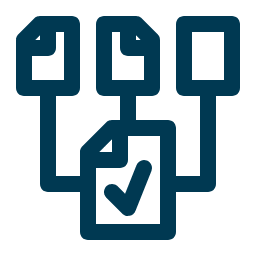
Advanced Sensor Data Integration & Transformation:
The suite integrates data from a variety of sensors installed on wind turbines, such as vibration, temperature, and acoustic sensors. This integration enables comprehensive monitoring of critical components like gearboxes, blades, and bearings.
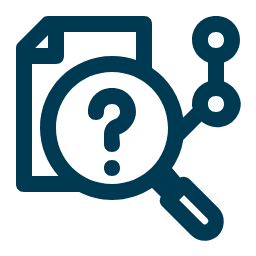
Predictive Analytics and Machine Learning:
XMPro iDTS employs machine learning algorithms to analyze sensor data, identifying patterns and anomalies that indicate potential maintenance needs. This predictive approach allows for early detection of issues, well before they lead to failures.

Maintenance Scheduling Optimization:
By analyzing data trends and predictive insights, XMPro iDTS helps optimize maintenance schedules. This shift from fixed-interval to condition-based maintenance reduces costs and prevents unnecessary downtime.

Real-Time Monitoring and Predictive Alerting:
The platform provides real-time monitoring of wind turbines, generating instant alerts when potential issues are detected. This enables maintenance teams to respond quickly, preventing minor issues from escalating into major failures.
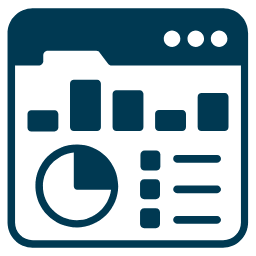
Customizable and Interactive Dashboards:
XMPro iDTS features customizable dashboards that present key data and insights in an intuitive format. These dashboards can be tailored to the specific needs of wind farm operators, providing them with actionable insights for maintenance planning.
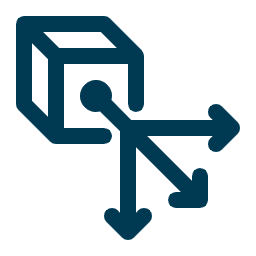
Scalability and Flexibility – Start Small, Scale Fast:
XMPro iDTS offers scalable and flexible solutions, allowing wind farms to start small and expand as needed. Its modular design ensures easy integration and adaptability, facilitating quick deployment and future-proof scalability.

Enhanced Safety & Operational Efficiency:
By enabling proactive maintenance and early detection of potential issues, XMPro iDTS enhances the safety and operational efficiency of wind turbines, reducing the risk of accidents and improving energy production reliability.

XMPro Blueprints – Quick Time to Value:
XMPro Blueprints offer a rapid path to value realization for wind farms. These pre-configured templates are designed for quick implementation, incorporating best practices and industry standards.
In summary, XMPro iDTS addresses the predictive maintenance needs of wind turbines by providing a comprehensive, real-time, predictive, and integrated solution. Its capabilities in digital twin technology, advanced sensor data integration, machine learning for anomaly detection, and effective visualization tools make it a powerful tool for enhancing the maintenance, safety, and efficiency of wind turbine operations.
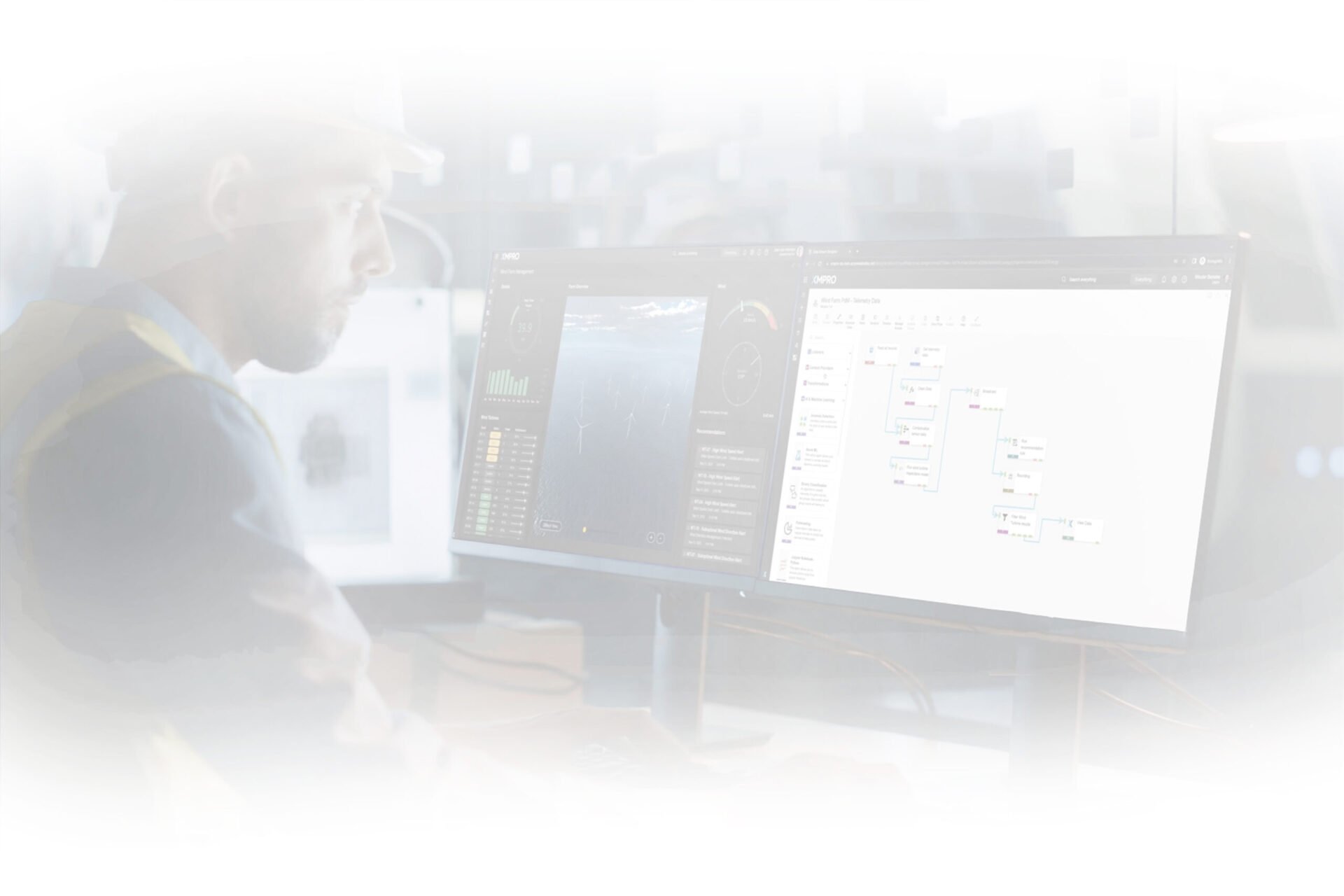
Not Sure How To Get Started?
No matter where you are on your digital transformation journey, the expert team at XMPro can help guide you every step of the way - We have helped clients successfully implement and deploy projects with Over 10x ROI in only a matter of weeks!
Request a free online consultation for your business problem.
"*" indicates required fields




